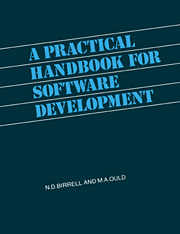Book contents
- Frontmatter
- Contents
- Foreword
- Preface
- 1 The choices facing the system developer
- 2 The software development process
- 3 Development techniques
- 4 Project Inception
- 5 System Definition
- 6 System Design
- 7 System Production
- 8 System Acceptance and Post-Acceptance Development
- 9 Project Debriefing
- Other bibliographies
- References
- Index
4 - Project Inception
Published online by Cambridge University Press: 11 January 2010
- Frontmatter
- Contents
- Foreword
- Preface
- 1 The choices facing the system developer
- 2 The software development process
- 3 Development techniques
- 4 Project Inception
- 5 System Definition
- 6 System Design
- 7 System Production
- 8 System Acceptance and Post-Acceptance Development
- 9 Project Debriefing
- Other bibliographies
- References
- Index
Summary
The purpose of the Inception Phase
The Inception Phase is that part of the development lifecycle in which you will decide to embark on the development project. This is the time in which you will make a large number of crucial decisions regarding the need for and nature of the proposed system. The questions that must be asked in this phase will depend on particular circumstances, but may include the following:
Why is the system needed?
Are there better alternatives?
Will the system be acceptable to its users?
At what price will the system be marketed?
Is there a market for the system?
What are the legal implications of the system?
What are the Trade Union implications of the system?
What is the intended lifetime of the system?
How reliable should the system be?
Can management approval be obtained for system development?
Will sufficient resources be available for system development?
Will sufficient resources be available to run the system?
Will the system be developed ‘in-house’ or will its development be put out to tender?
How will tenderers' responses be assessed?
Although this phase is not directly involved with software development, it is vitally important that you ask the correct questions and obtain the correct answers to lead to a firm system requirement. These answers will affect all subsequent phases and ultimately the usefulness of the entire project.
- Type
- Chapter
- Information
- A Practical Handbook for Software Development , pp. 47 - 55Publisher: Cambridge University PressPrint publication year: 1985



